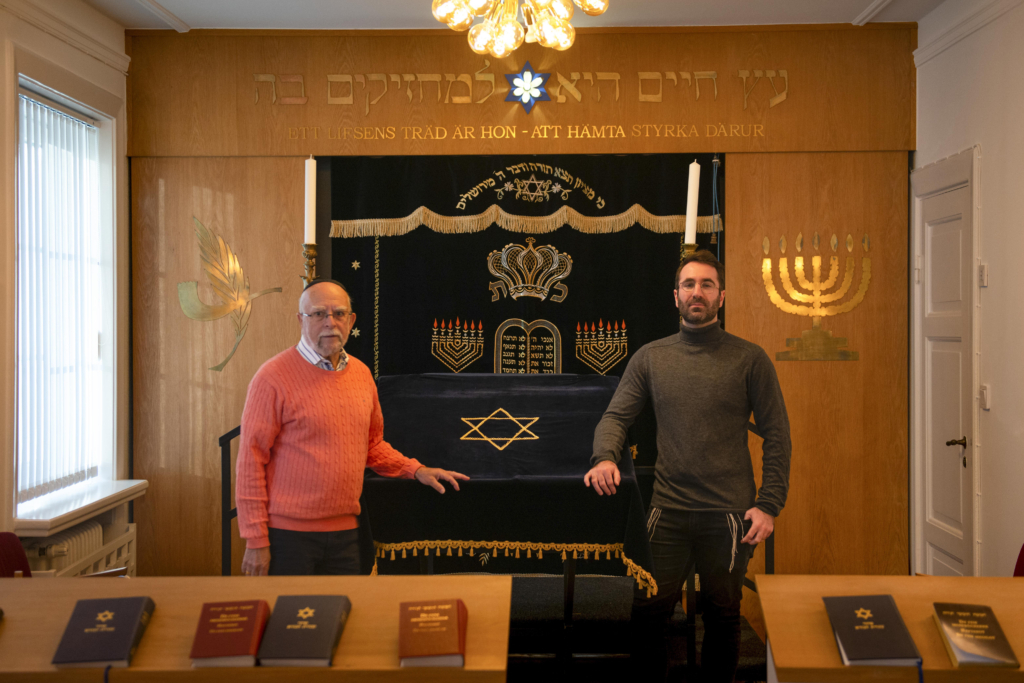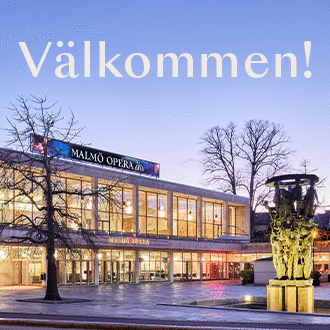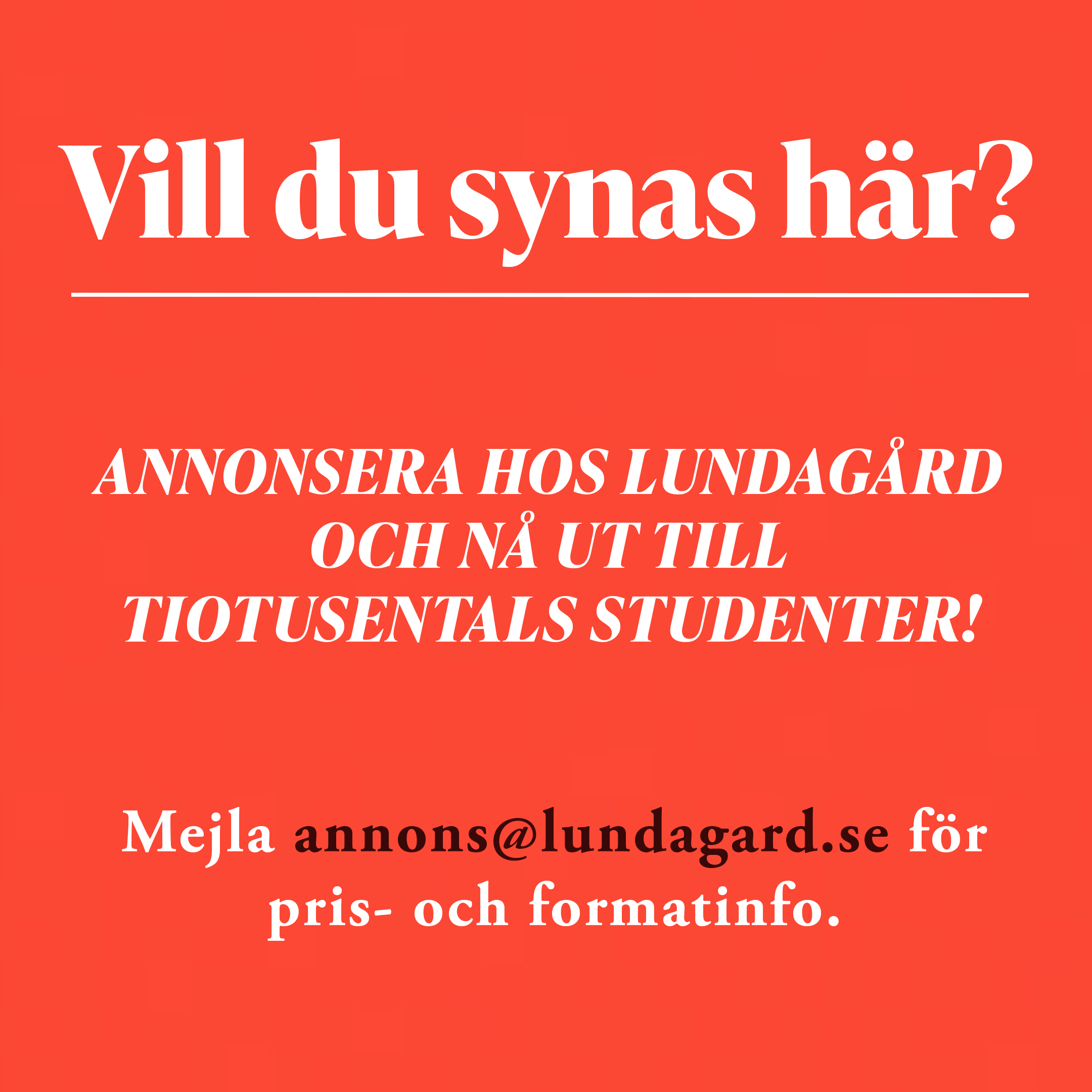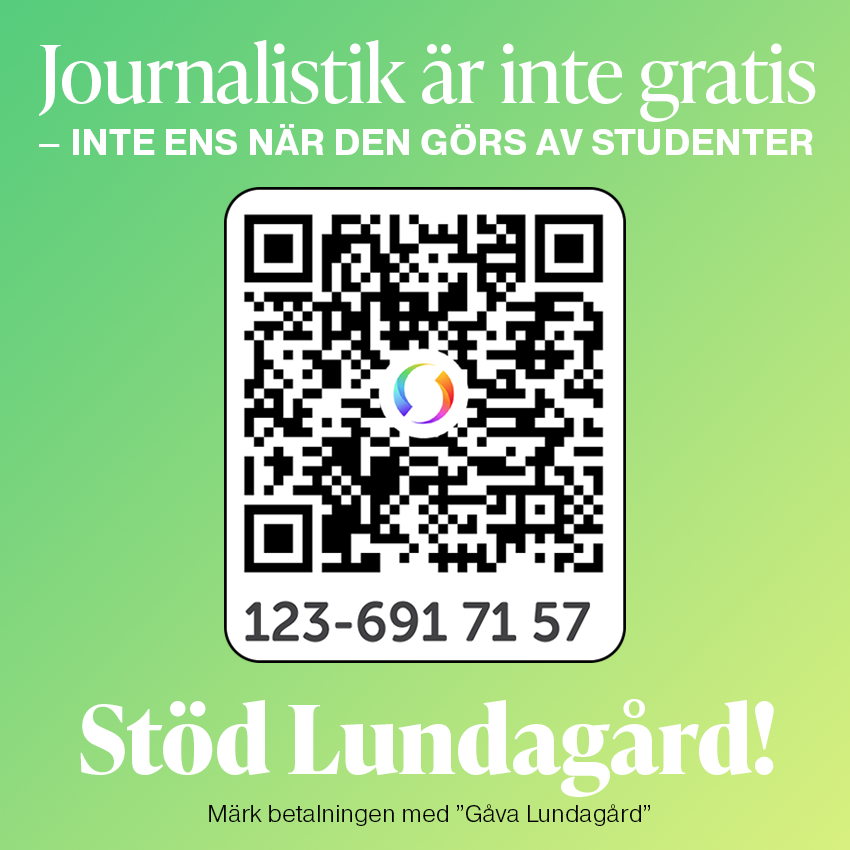The International Forum on Holocaust Remembrance and Combating Antisemitism was held in Malmö on the 13th of October 2021. As people shared their experiences throughout the evening, the question lingered: What role does remembrance serve, and how can it be practiced to combat the threats that Swedens 20,000 remaining Jews face?
David Teymouri, president of the Jewish association in Helsingborg, is all too aware of the threat of antisemitic attacks on his community. “Two and a half years ago, the secretary of this community was the victim of a stabbing. She was stabbed fourteen times. It was an act of terror against her directly”, he recounts in a shockingly calm manner. At 27 years old, David Teymouri is a community leader, diplomat for his congregation in the city of Helsingborg and a member of the Central Council of Jewish Life in Sweden.
He explains: “Swedish people, in general, are very naive about our situation. They can’t imagine that it’s hard to be a Jew. But it is. We’ve discussed a couple of times to actually put the Star of David on the building because, why should we hide? But, the members and their safety come before everything else.”
David Teymouri’s concern for his community is evident in the fervour with which he speaks and it is reiterated by the bulletproof vests in the cloakroom of his synagogue. He emphasises that symbols carry weight and that the way in which they are used has an impact on their significance.
“Three years ago, on the anniversary of Kristallnacht, someone put the Star of David on our window. I stayed here until one o’clock at night doing everything I could to take it off. Because if people see it, we’re victimised in a way. I’m not going to become a victim because somebody did something stupid.”
They thought that staying quiet would save us from what happened.
Sadly, attacks on the Jewish community are quite common in Sweden. Antisemitic hate crimes rose by over 50% between 2016 and 2018 according to the Swedish National Council for Crime Prevention. Such attacks made international headlines in 2017 when Molotov cocktails were thrown at a Hanukkah celebration for teenagers in Stockholm, and two days later, firebombs were left outside a Jewish burial chapel in Malmö. “We need to normalise that Jews exist,” David Teymouri says, sighing. “The problem is that we are too afraid to show who we are. If we wear a Star of David necklace, there is a chance we will get jumped.” Remembrance is not just about respecting the dead, he mentions, but also about making sure that the lives of Jews today are safer than those of their ancestors.
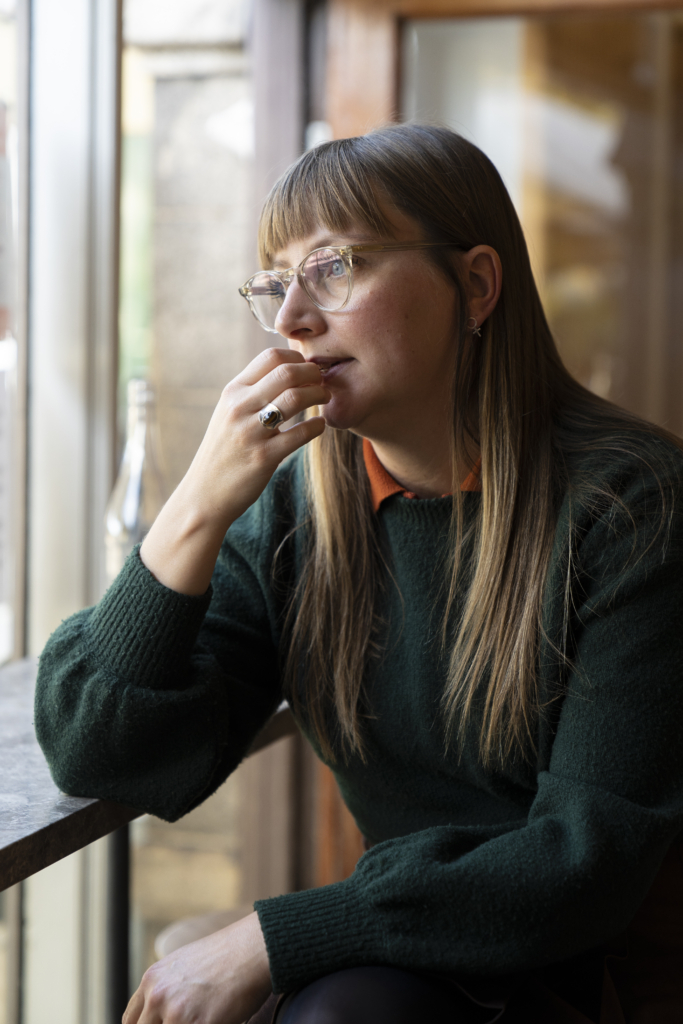
which is a common phenomenon. Photo: Saber
Malmgren.
Trials, Tribulations and Traditions
Frida, discovered her Jewish heritage only as an adult, recounts that “The Swedish village that I come from is a very right-wing place. I heard so much while growing up. People would talk about minorities in a bad way. Sometimes I think about what it would have been like for my family there if we had known that this was our story.”
She continues “My Jewish heritage is through my great-great-grandmother who, during the war, had to hide who she was. No one in our family knew. She even kept her Jewish identity hidden from all nine of her grandchildren”.
Such a discovery is not entirely unique, David Teymouri remarks. He found out as an adult that members of his family had kept their true identity a secret. “The consequences that came from the Holocaust is the trauma that still exists in the generations to come. Even grandchildren that have never experienced it will still have an inherited trauma because of what happened. It just moves on in a way.” Gideon Beil, David Teymouri’s mentor, adds that “in my generation, our parents did not want to talk about [the Holocaust]. They thought that staying quiet would save us from what happened.”
However, Frida and David Teymouri both represent a generation that is pushing back against antisemitism and the consequences of the Holocaust.
“I’m trying to reconnect to and learn about my Jewish heritage through food” Frida recounts contemplatively. This has been important to her as sometimes she has experienced imposter syndrome creep up on her when learning about Judaism. “Getting to know the holidays and associated rituals” has also been a great help she adds. “Before Covid, I had this idea of having a cheesy party after watching The O.C., where they celebrate ‘Chrismukkah’, a combination of Christmas and Hanukkah. I have done that twice with my friends as a fun thing to do together.” David Teymouri says “when you come from a background of not knowing who you are and you are welcomed into a community with open arms, you feel at home immediately.”
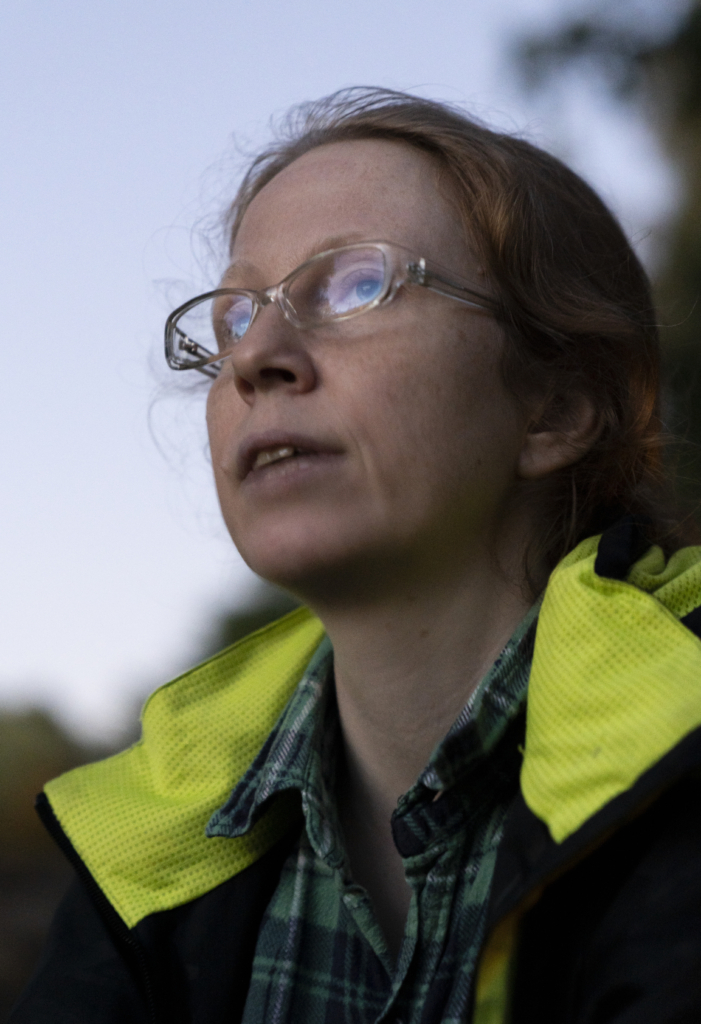
remembrance is part of the culture. Photo: Saber
Malmgren.
A Continent of Remembrance
The impact of the Second World War (WW2) can also be felt outside the Jewish community. Anna Maria Padol approaches the topic with a more academic, analytical approach. Sitting in the Lund Botanical Garden at dusk, she explains that as a Polish person, places of historical and personal significance are a part of everyday reality.
Don’t explain Schindler’s List to a Kraków girl!
“I was in this shopping mall to see a fascinating exhibition about life where there are real human bodies, cut into pieces, to show their inner workings. However, the event was directly opposite a monument in remembrance of a Nazi labour camp. When I realised [this], suddenly the exhibition seemed a bit poor in taste,” she notes, almost bemused at the satirical turn of events.
Chuckling, Anna Maria Padol continues to recount the time her non-Polish partner explained to her the plot of Schindler’s List. “I told him – do you remember that monument we pass on the way to my brother’s house? A scene in the film happened there. Don’t explain Schindler’s List to a Kraków girl!”
Dr. Lena Kahle, a research associate at the University of Hildesheim, Germany, also has close connections to the Holocaust, despite not being Jewish. Having lived in Berlin her entire life, she is no stranger to Holocaust remembrance, she assures me while sipping her coffee in a hipster café. “In my teenage years, it was really necessary for me and a self-organised group I was in to engage with German history. I was also part of an organisation called American Jews Meet Modern Germany. I was a guide, touring Jewish people through Berlin discussing ‘What is Germany today?’” she recounts.
During this time, “It came out that my great-grandfather had not been a police officer during the Second World War but that he had actually been part of the SS [Shutzstaffel, a paramilitary organization in Nazi Germany, editors note] in Poland,” she recounts, unabashed. “It’s a pretty typical German experience within families. It’s not that I would say, wow, crazy, my story! It’s just that it is interesting when you look at your own family history.”
These experiences did however impact Dr. Lena Kahle in other ways. Together with her colleague Verena Negel, she conducted a groundbreaking study on Holocaust education in German universities to look at the number and quality of courses nationwide. The total was much lower than she expected. “Experts who work on Holocaust remembrance refer back to this study because now they have the proof that there is not enough being done”, Dr. Lena Kahle adds with a touch of pride.
Students need to learn how to experience themselves as people with agency.
Anna Maria Padol experienced a similar absence in Holocaust education during her own time at school. She recalls studying books in Polish class that were written during WW2 or about the topic, but that it was never mentioned in history class. In Poland, she concludes, the Holocaust has become a part of collective memory and its remembrance is part of the nation’s culture.
However, due to increasing immigration to Germany, one can no longer safely assume that everyone has had these personal experiences which help create an understanding of the Holocaust. Teachers are unable to refer to a so-called ‘German history’, Dr. Lena Kahle explains. She reminisces that “In the ‘90s, teachers would say ‘Bring something from home that your family has from the Second World War’ and then kids brought old passports containing pictures of their grandparents in SS uniforms to discuss. Today, we have to find other ways.”
The Thread of Memory
One such way in which history and lessons from the Holocaust can be applied at a global level was proposed by philosopher Theodor Adorno, Dr. Lena Kahle describes. “He addressed teachers over a radio interview to not just teach about Auschwitz in their classrooms, but to also describe it to their students as a Zivilisationsbruch, a break in a society’s status quo. This change in perspective, he believed, would allow students to become Mundigebürger, in other words, responsible citizens.”
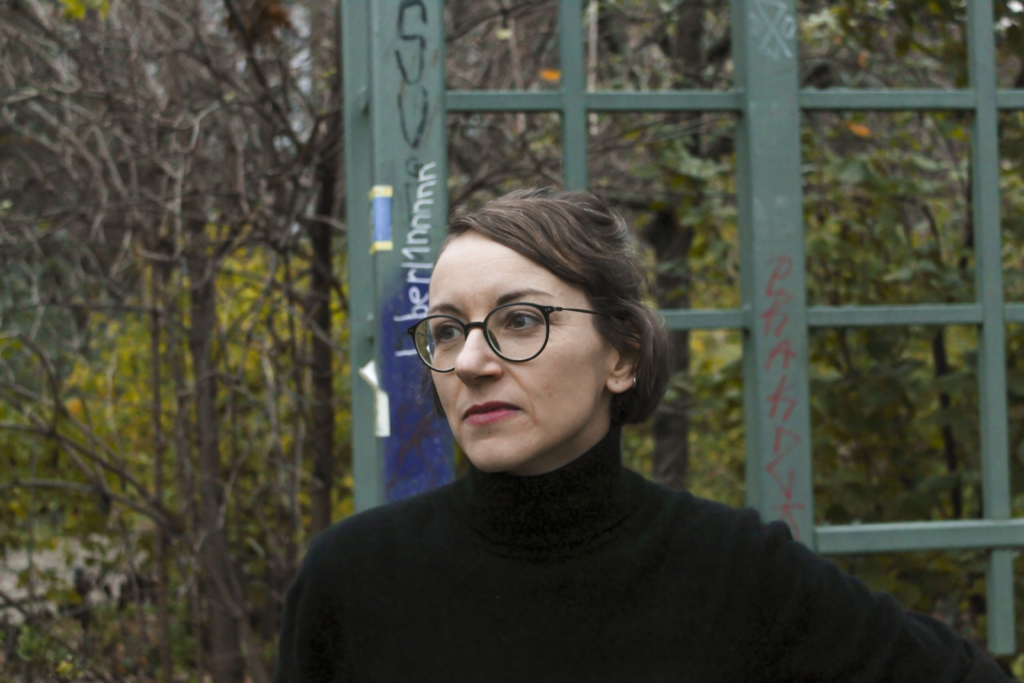
Dr. Lena Kahle takes a deep breath and continues “you need this so-called human rights education in schools for people to be empowered later as adults.” In a passionate tone, she declares that this requires teaching children to show empathy and how to stand up for themselves and others. The aim, she remarks, is to ultimately help them develop a moral compass for what is right and wrong. “This is very much connected to democracy education because students need to learn how to experience themselves as people with agency,” she reiterates.
Such an educated citizenry is not only important in combating antisemitism but also to stand up against Islamophobia, xenophobia and anti-LGBTQ+ groups, David Teymouri believes. “I think people need to stand up for each other more, become better allies.” He emphasises the power of small acts of kindness and smiles as he remembers how others have shown solidarity for the Jewish community in the past.
“There is a beautiful thing that happens once in a while. It’s called a kippah walk. Non-Jews put on a kippah and they will walk through the city, to show solidarity.” He quickly follows with another time he was touched by the acts of strangers after the incident at Malmös synagogue. “The day after, people came with notes that they put on the fence saying ‘We are here for you’ and ‘We love you.’”
These acts of remembrance and kindness are needed because, as Dr. Lena Kahle emphasises, “In a way, it’s not over. In Germany, we are facing right-wing extremism and a very extreme political party. It’s not just a far away, weird splinter group that no one takes seriously anymore; they have a lot of voters. And this is happening all over Europe.”
We will continue to fight to educate others, but we also need people to fight with us.
Frida expresses similar worries about the future. “I have read a little bit about people who say the Holocaust never happened and I try to just take it like every other conspiracy theory. But this is more of a threat than any other.” Continuing, she lists examples of how this can be done. For instance, the preservation of Auschwitz as a site of remembrance, connecting with local Jewish communities and attending Holocaust remembrance or education events.
Amongst all the struggle, however, David Teymouri expresses with a twinkle of pride in his eyes: “it’s important to note that the Jewish people are very resilient. When it comes to the Holocaust, events that we host are mostly to educate everyone around us. We will continue to fight to educate others, but we also need people to fight with us.”


